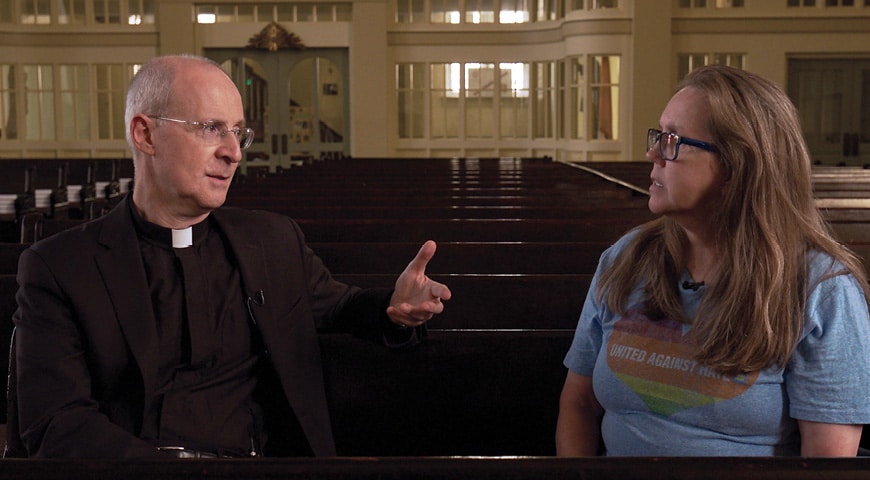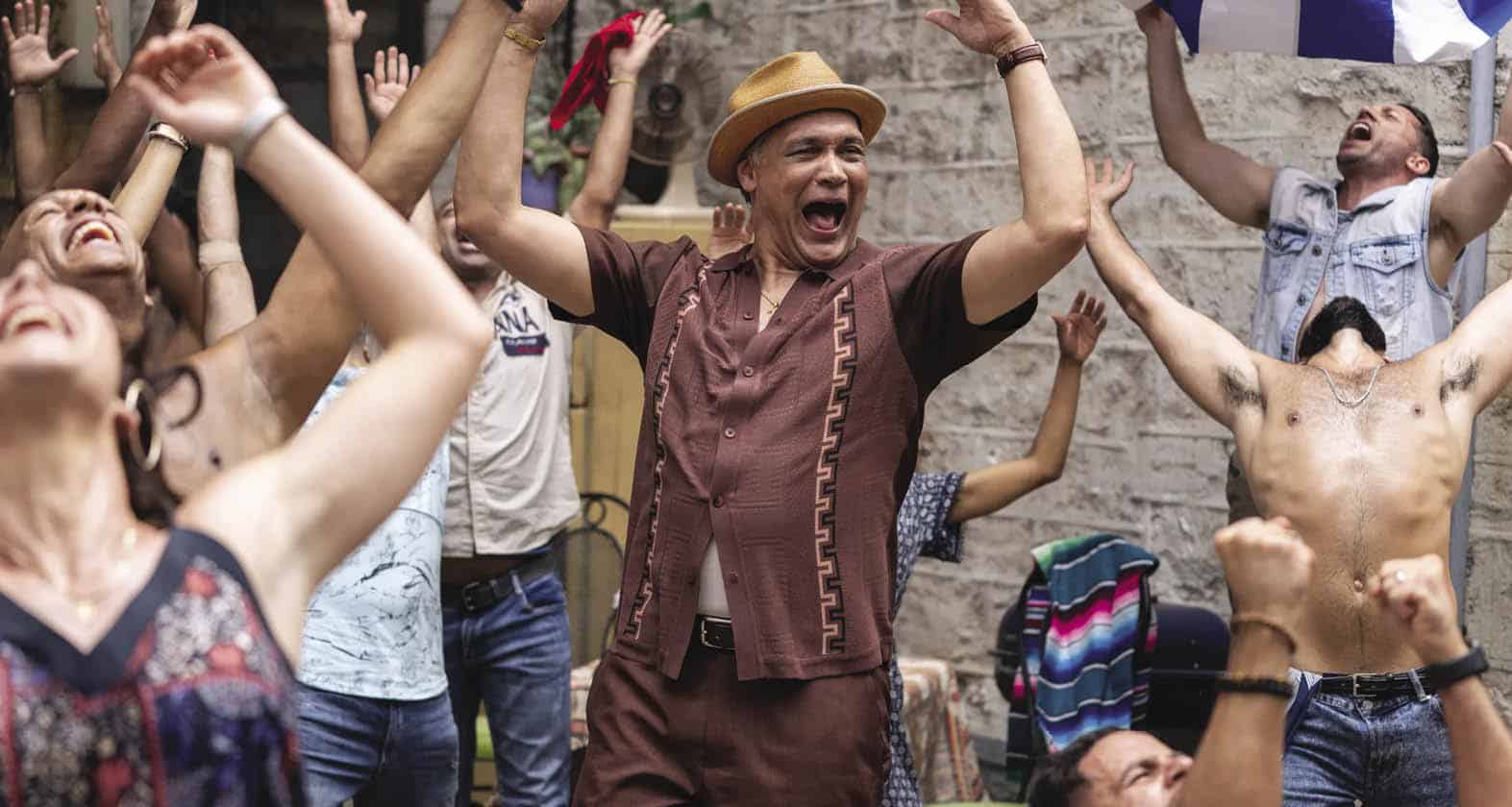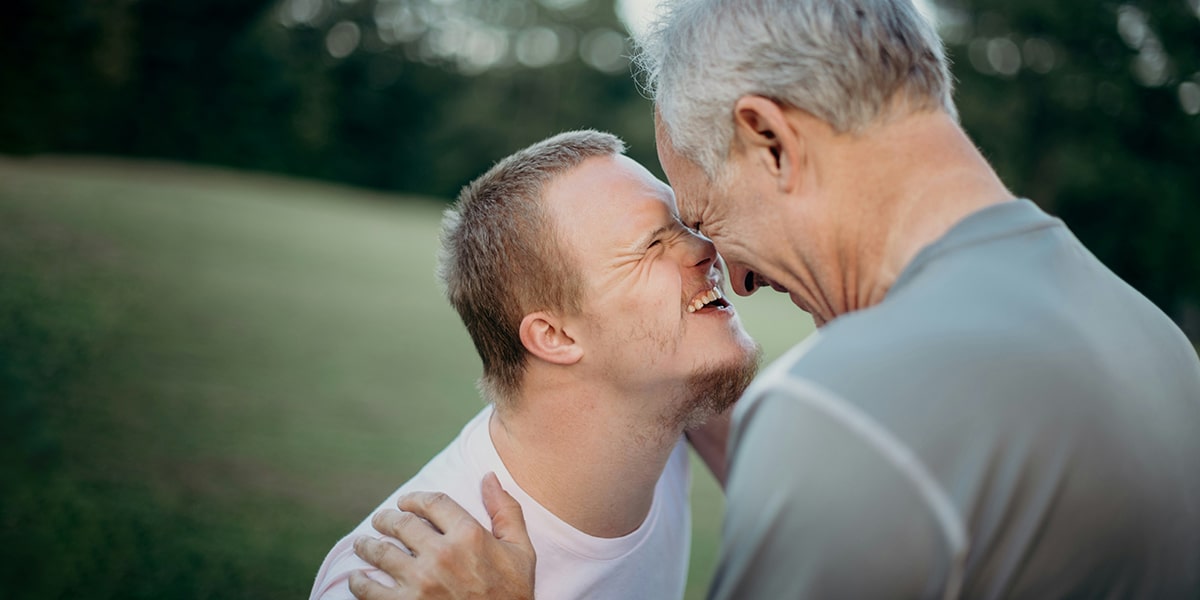In the Heights
Usnavi (Anthony Ramos), a bodega owner in the Washington Heights neighborhood of Manhattan, tells a group of children about Abuela Claudia (Olga Merediz), who helped raise him, Kevin (Jimmy Smits), and Benny (Corey Hawkins). He also introduces his cousin, Sonny (Gregory Diaz IV), and the ladies who run the beauty salon. Finally, we meet Vanessa (Melissa Barrera), his girlfriend, who wants to become a fashion designer. Then Nina (Leslie Grace), Kevin’s daughter, comes home from Stanford and tells her father they cannot afford her tuition. Tension and joy are evident in the Heights over a hot summer.
The neighborhood is made up of people who came to New York from the Dominican Republic, Cuba, and Puerto Rico, and their US-born children. People get excited when they learn that someone bought a winning lottery ticket from Usnavi’s bodega, and they each hope they win. But things are changing in the Heights.
The beauty salon is moving to the Grand Concourse in the Bronx because rents in Manhattan are rising. Vanessa’s rental application for a small apartment in the garment district is denied because her credit is not good enough. Abuela sings “Paciencia y Fe” (“Patience and Faith”), a song about virtues she learned as a new immigrant long ago. Then the lights go out due to a power outage. As Abuela lights candles in the darkness, the people sing a song of being powerless, with its double meaning of no electricity and their struggles as citizens in the community.
In the Heights is a Broadway musical adapted by Lin-Manuel Miranda and Quiara Alegría Hudes. Making its debut in cinemas and on HBO Max, this film is a slice of life unfamiliar to many, characterized by joyful, energetic dancing and rap songs, Miranda’s specialty.
Though the cast is almost entirely made up of Latino characters, some have criticized the film for not including Black Latino actors, something that Miranda and director Jon M. Chu have vowed to remedy in future projects. The themes of family, community, immigrant struggles, and racism are handled in ways that create awareness and uplift at the same time.
A-3, PG-13, Mature themes.

Summer of Soul (…Or, When the Revolution Could Not be Televised)
This new documentary, directed by musician and writer Questlove, is a journey to Harlem in 1969. It is about the Harlem Cultural Festival, a series of concerts held in Mount Morris Park on Sundays during the same summer as Woodstock. And though the concerts were taped, only small portions were televised late at night. After 50 years in someone’s basement, footage of these concerts show some of America’s greatest musicians in concert at last.
The series was the brainchild of promoter Tony Lawrence, who created it out of almost nothing. Only one sponsor signed on, Maxwell House Coffee. The concerts were free. An audience of 300,000 attended peacefully, despite social issues that could have upset everything. Heroin use was at an all-time high in Harlem, Vietnam War protests were increasing, and racial tensions were everywhere. But with this concert film, we see Harlem’s rich culture and the people who created it.
Some of the acts included B.B. King, the 5th Dimension, Gladys Knight & the Pips, David Ruffin, Nina Simone, Sly Stone, and Mahalia Jackson. The concert also included music performed by Ray Barretto, representing Spanish Harlem as well as Afro-Cuban and Afro-Puerto Rican music. Some performers, such as Nina Simone, had a strong message for the people: “We are young, gifted, and Black—and that’s a fact.”
Though it has taken over 50 years for what is called “the Black Woodstock” to go mainstream, it is indeed a gift for us now. What’s sad is that so little has changed for members of the Black community, which still struggles with homelessness and voting rights. This music and its message are as relevant as ever.
Not yet rated, PG-13, No objectionable material.

Building a Bridge
This documentary follows Father James Martin, SJ, at home, at America Media in New York, and as he invites LGBTQ members, their families, and the Church to dialogue and accept each other as children of God. Father Martin explains his ministry to the LGBTQ community and their families because, as Pope Francis says, it is the overlooked person we’re called to pay attention to. The film’s title is taken from Father Martin’s 2018 book that he wrote in response to 2016’s Pulse nightclub shooting in Orlando, Florida, when almost no bishop reached out to comfort the victims or their families as they do after other mass shootings.
This documentary, executive produced by Martin Scorsese and directed by Evan Mascagni and Shannon Post, is gentle, strong, and hopeful. The juxtaposed scenes with one of Father Martin’s most hostile critics, Michael Voris of Church Militant, come off as more dialogic than antagonistic.
It is very revealing when Father Martin tells a Catholic audience that the highest suicide rates among young people who identify as LGBTQ come from the most religious of families. Fordham University’s Father Bryan Massingale comments throughout the film on moral imperatives about the inclusion of LGBTQ people, both in society and in the faith community.
Not yet rated, Mature themes regarding sexuality.








